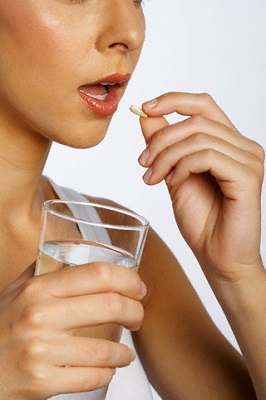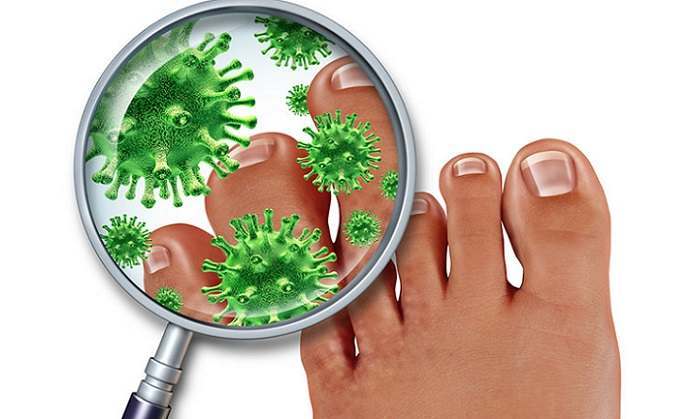Introduction
The fungus that affects the feet is also called athlete’s foot. This infection usually causes a burning or itching effect in the area between your toes. It also leads to skin blisters and dryness on the affected areas of the foot. The bottom of the foot (sole) or the skin between your toes may also peel off. Persons suffering from athlete’s foot can take some oral medicines to cure the condition.
Treating Athlete’s Foot with Itraconazole
 This antifungal medicine not only treats athlete’s foot, but also treats other fungal infections in the lungs, throat, mouth, and fingernails. It is available in the form of tablets, capsules, and liquid. The relevant directions must be followed when taking this drug. Itraconzaole has some side effects including diarrhea, dizziness, skin rash, constipation, itching, headache, and stomach pain. These effects usually lessen within 2 to 5 days. However, they may occur for a prolonged period. In this case, it is important to consult your physician for help. There is also a likelihood of experiencing adverse side effects such as dyspnea, fever, nausea, pain during urination, and hearing problems. Other adverse effects of this drug include clay-like stool, rapid weight gain, swelling, yellowish skin, yellowish eyes, and dark urine. It is advisable to look for medical assistance as soon as possible when such side effects occur. You should not take certain medicines like quinidine, midazolam, lovastatin, cisapride, and ergonavine if you are taking itraconzaole because they can cause dangerous drug interactions.
This antifungal medicine not only treats athlete’s foot, but also treats other fungal infections in the lungs, throat, mouth, and fingernails. It is available in the form of tablets, capsules, and liquid. The relevant directions must be followed when taking this drug. Itraconzaole has some side effects including diarrhea, dizziness, skin rash, constipation, itching, headache, and stomach pain. These effects usually lessen within 2 to 5 days. However, they may occur for a prolonged period. In this case, it is important to consult your physician for help. There is also a likelihood of experiencing adverse side effects such as dyspnea, fever, nausea, pain during urination, and hearing problems. Other adverse effects of this drug include clay-like stool, rapid weight gain, swelling, yellowish skin, yellowish eyes, and dark urine. It is advisable to look for medical assistance as soon as possible when such side effects occur. You should not take certain medicines like quinidine, midazolam, lovastatin, cisapride, and ergonavine if you are taking itraconzaole because they can cause dangerous drug interactions.
Treating Athlete’s Foot with Fluconazole
 This antifungal medicine has similar properties with itraconzaole. It can treat yeast infections that affect the throat, mouth, vagina, blood, organs, and the stomach. Fluconazole is available in tablet or liquid form. It is usually taken on a daily basis. The downsides of this drug include stomach pain, heartburn, diarrhea, and dizziness. Fluconazole also alters food taste. Consider these as normal side effects, but contact a medical professional if they occur for a week or more. The adverse side effects associated with fluconazole include rashes, seizures, yellowish eyes, yellowish skin, breathing problems, lack of appetite, easy bleeding, easy bruising, and difficulties in swallowing. You should call your doctor immediately if these effects occur. Do not take fluconazole with medications such as rifampin, warfarin, sotalol, terfenadine, zidovudine, and valproic acid because they can cause the previously mentioned side effects. Therefore, the prescription may need some alteration.
This antifungal medicine has similar properties with itraconzaole. It can treat yeast infections that affect the throat, mouth, vagina, blood, organs, and the stomach. Fluconazole is available in tablet or liquid form. It is usually taken on a daily basis. The downsides of this drug include stomach pain, heartburn, diarrhea, and dizziness. Fluconazole also alters food taste. Consider these as normal side effects, but contact a medical professional if they occur for a week or more. The adverse side effects associated with fluconazole include rashes, seizures, yellowish eyes, yellowish skin, breathing problems, lack of appetite, easy bleeding, easy bruising, and difficulties in swallowing. You should call your doctor immediately if these effects occur. Do not take fluconazole with medications such as rifampin, warfarin, sotalol, terfenadine, zidovudine, and valproic acid because they can cause the previously mentioned side effects. Therefore, the prescription may need some alteration.
Treating Athlete’s Foot with Terbinafine
This antifungal drug has the ability to treat antifungal infections that occur on fingernails and toenails. It is available in the form of a tablet. The tablet is taken every day for twelve weeks. It has some side effects just like other drugs. The known negative effects include rashes, itching, stomach pain, hives, and stomach problems. It is expected that these effects should subside, but it is vital to consult a physician if they fail to disappear within 7 to 14 days. The adverse side effects associated with terbinafine include extreme weariness, dark urine, vomiting, pale stool, sore throat, severe rashes, and lack of appetite. Contact your doctor if you have these symptoms.












